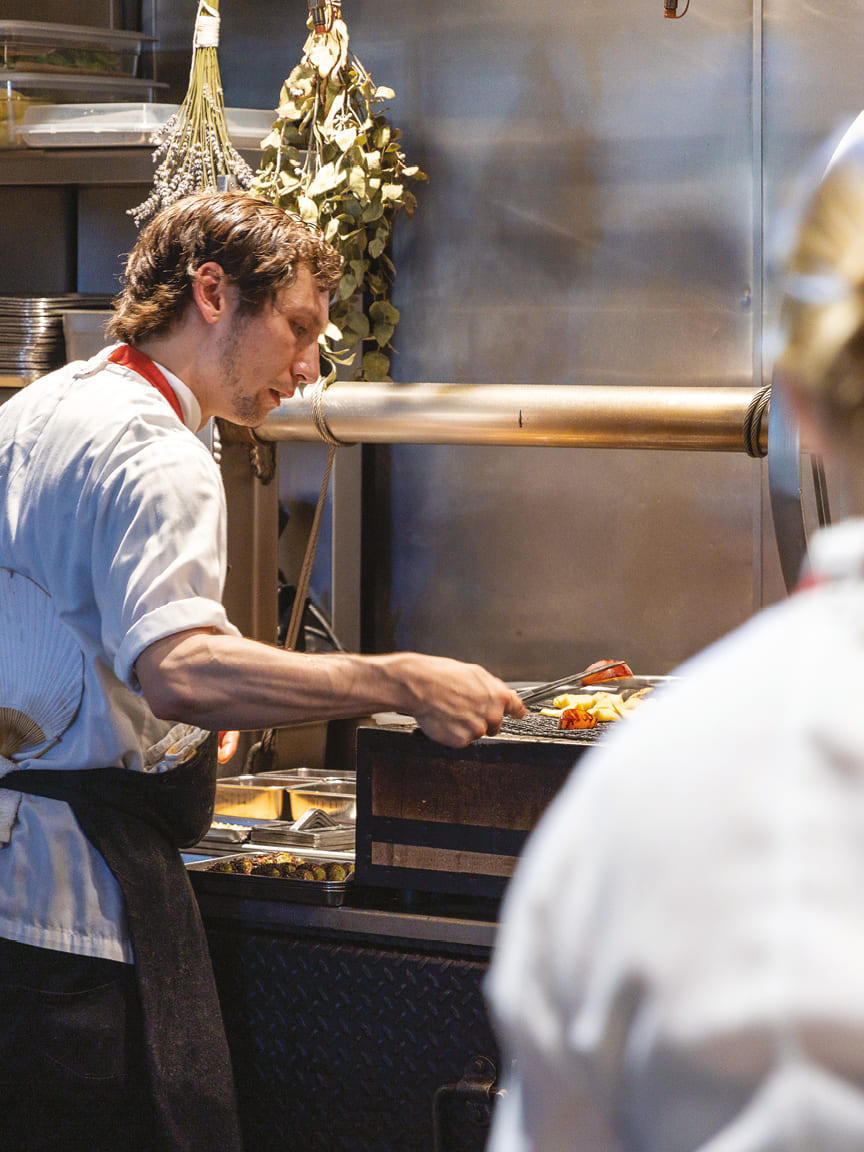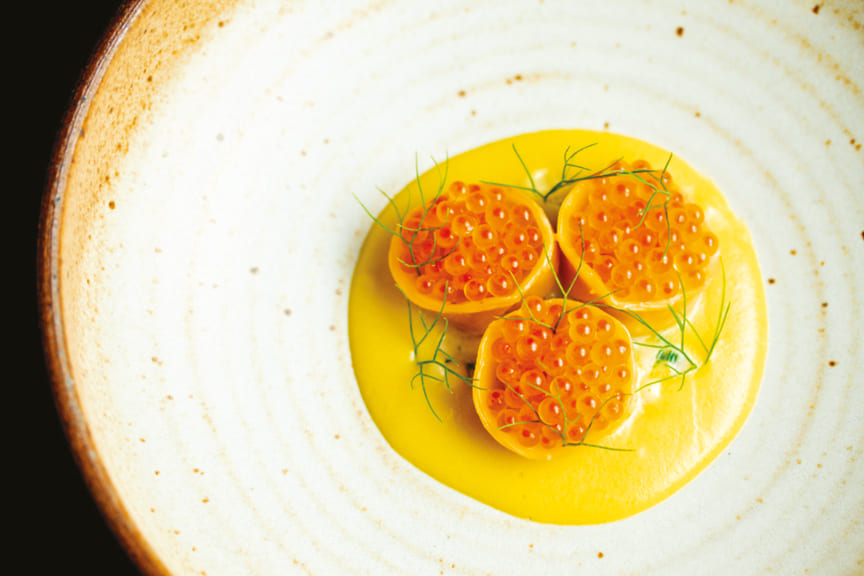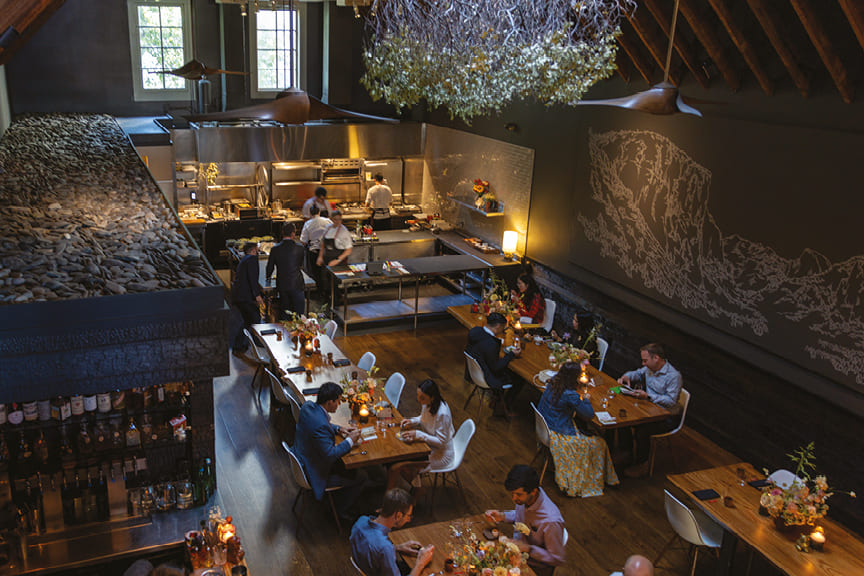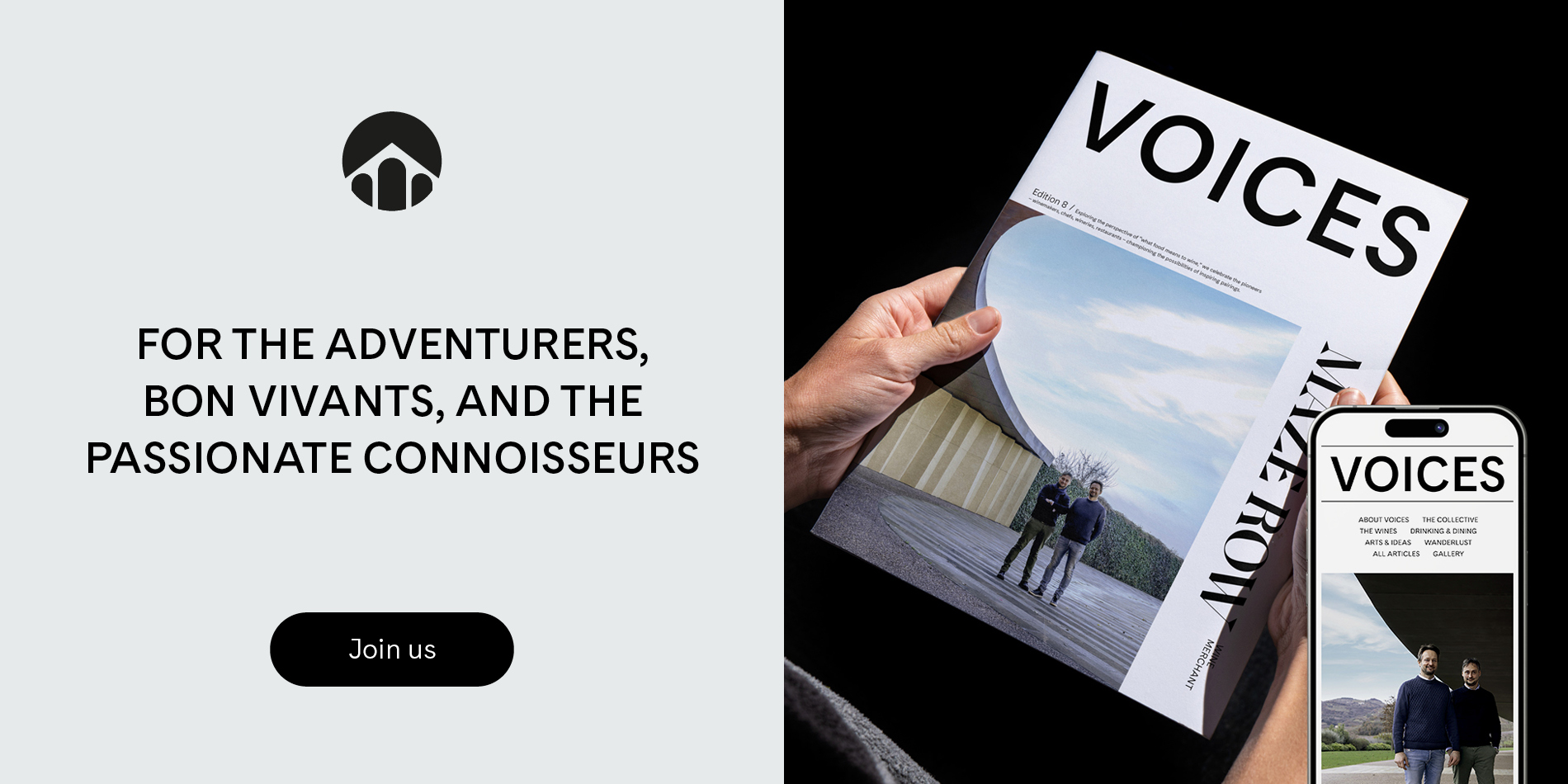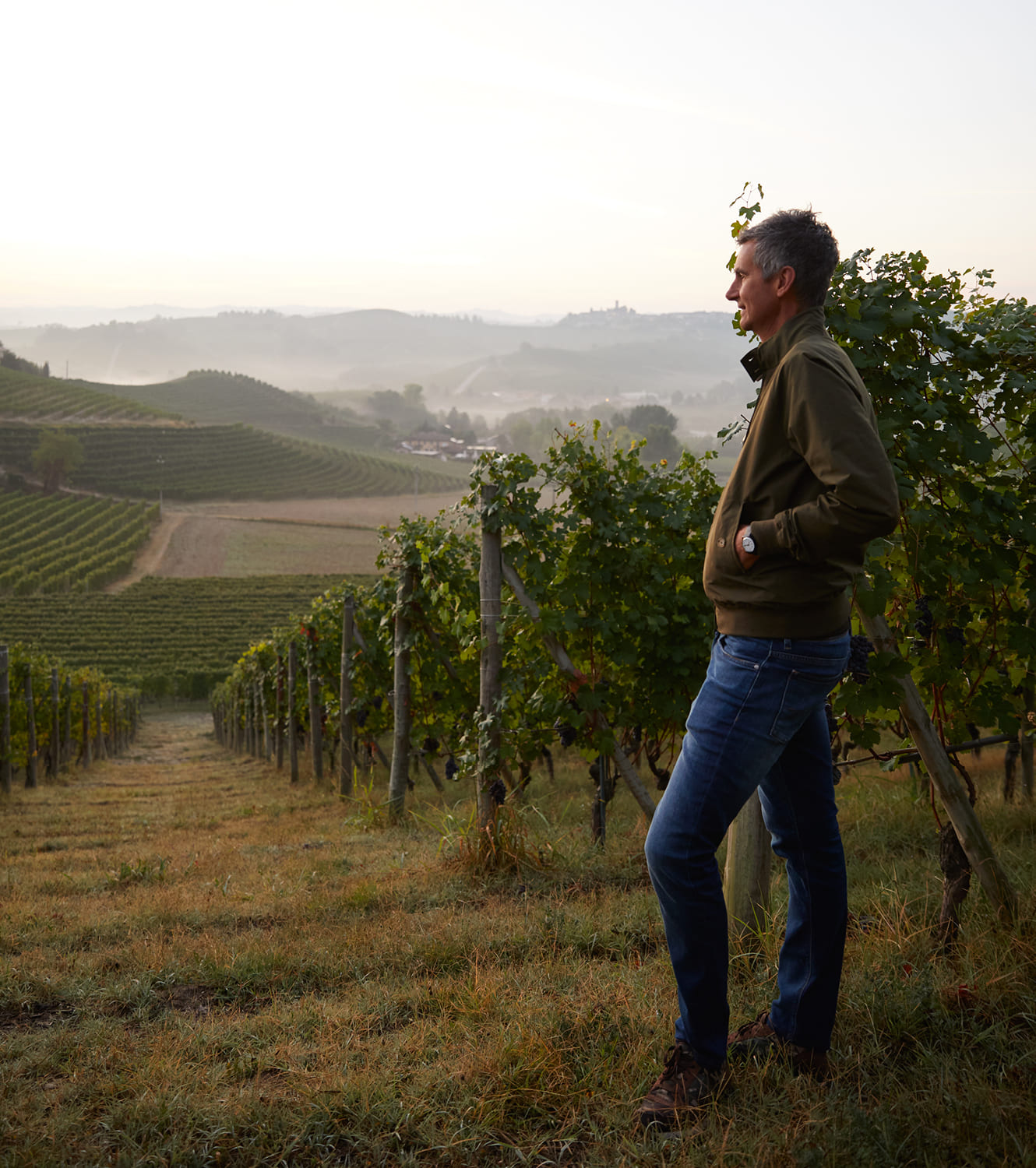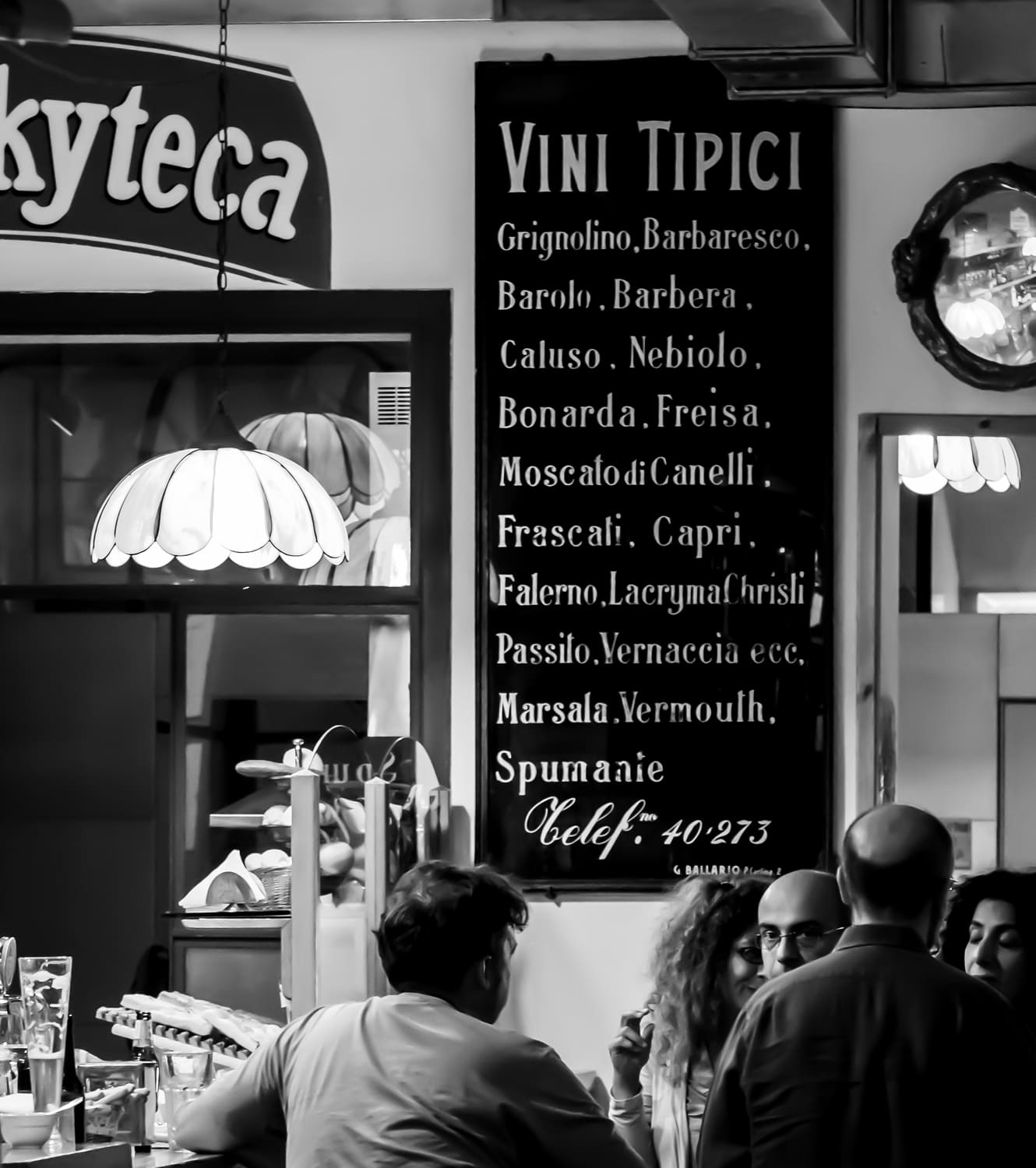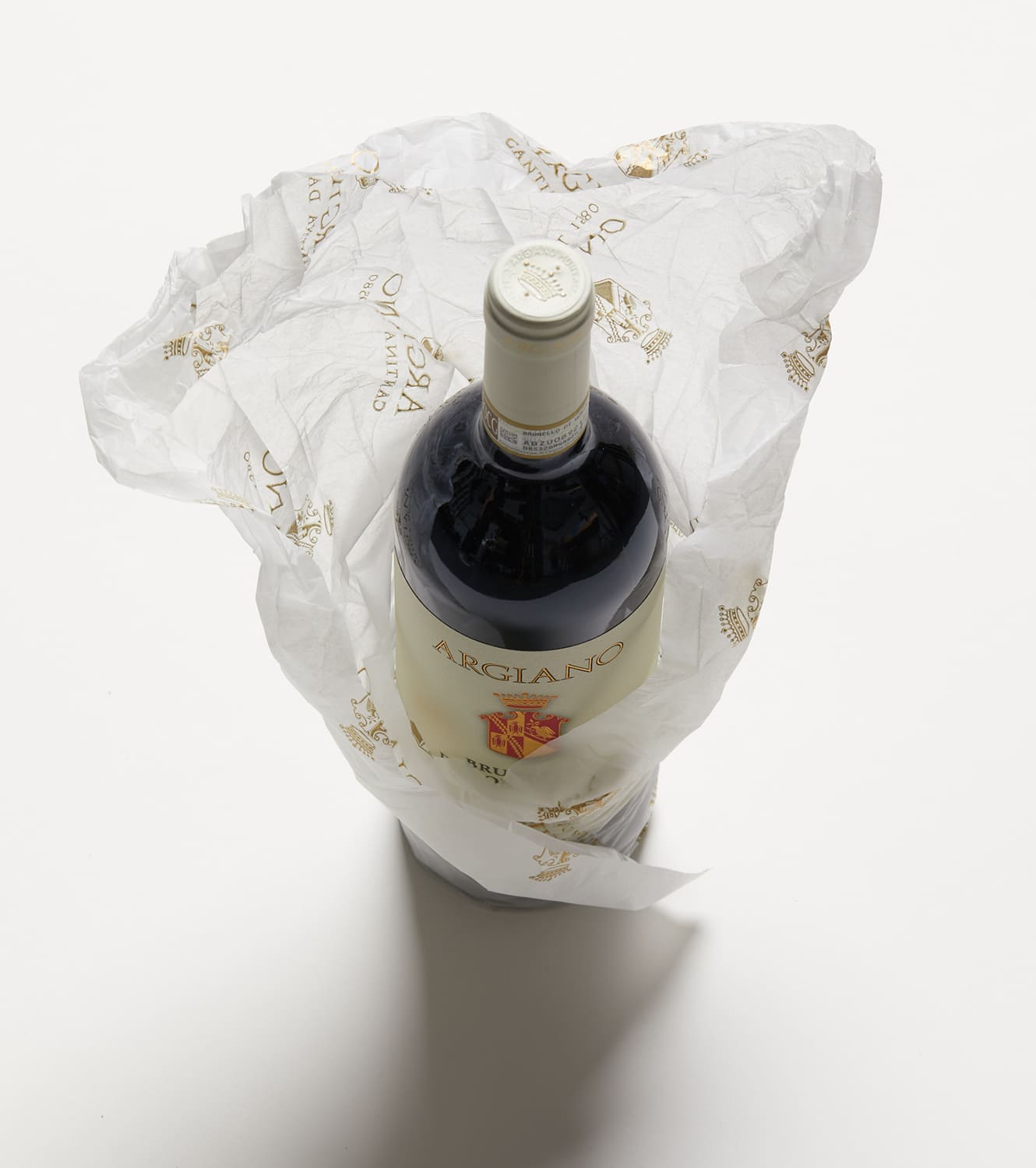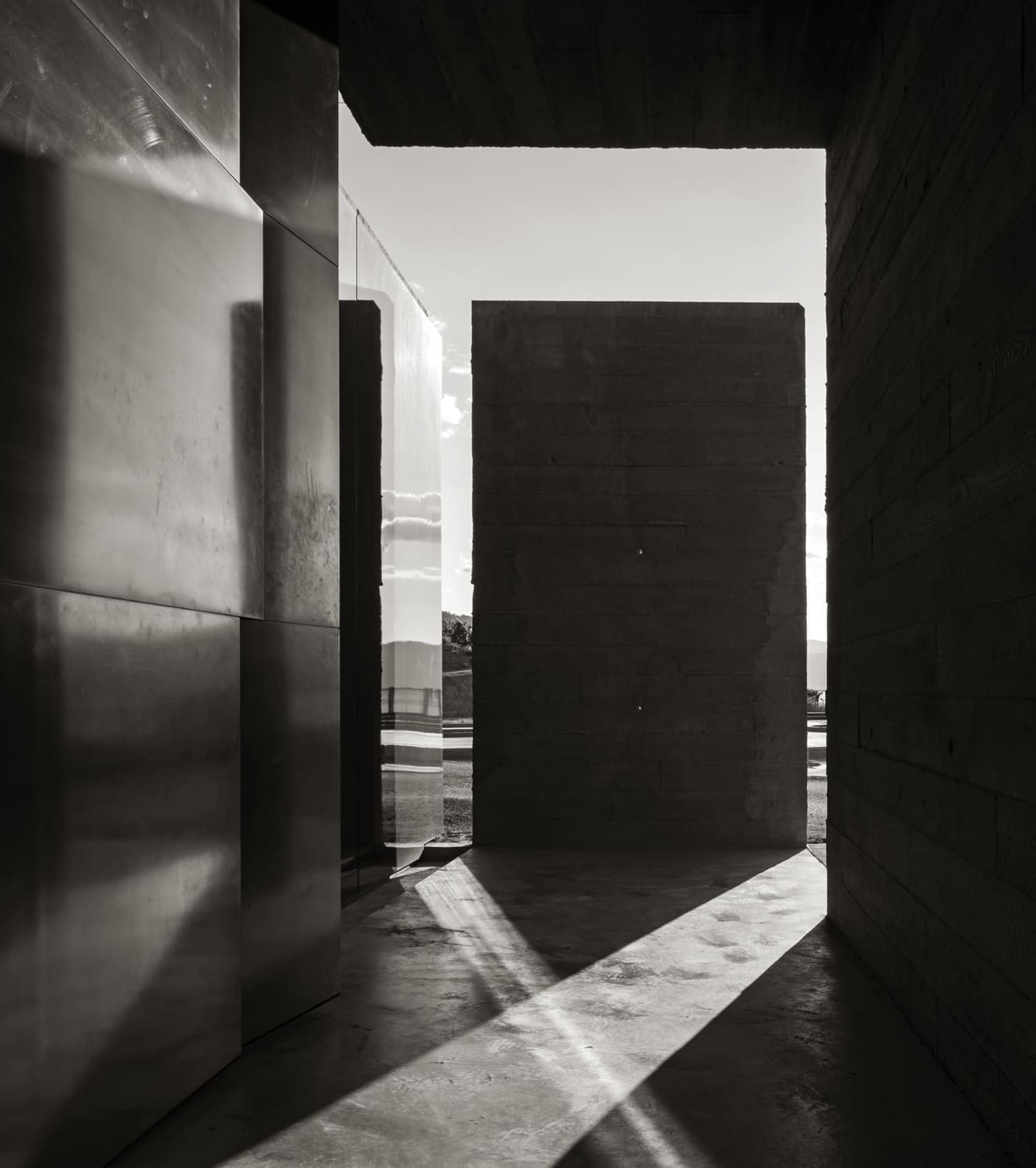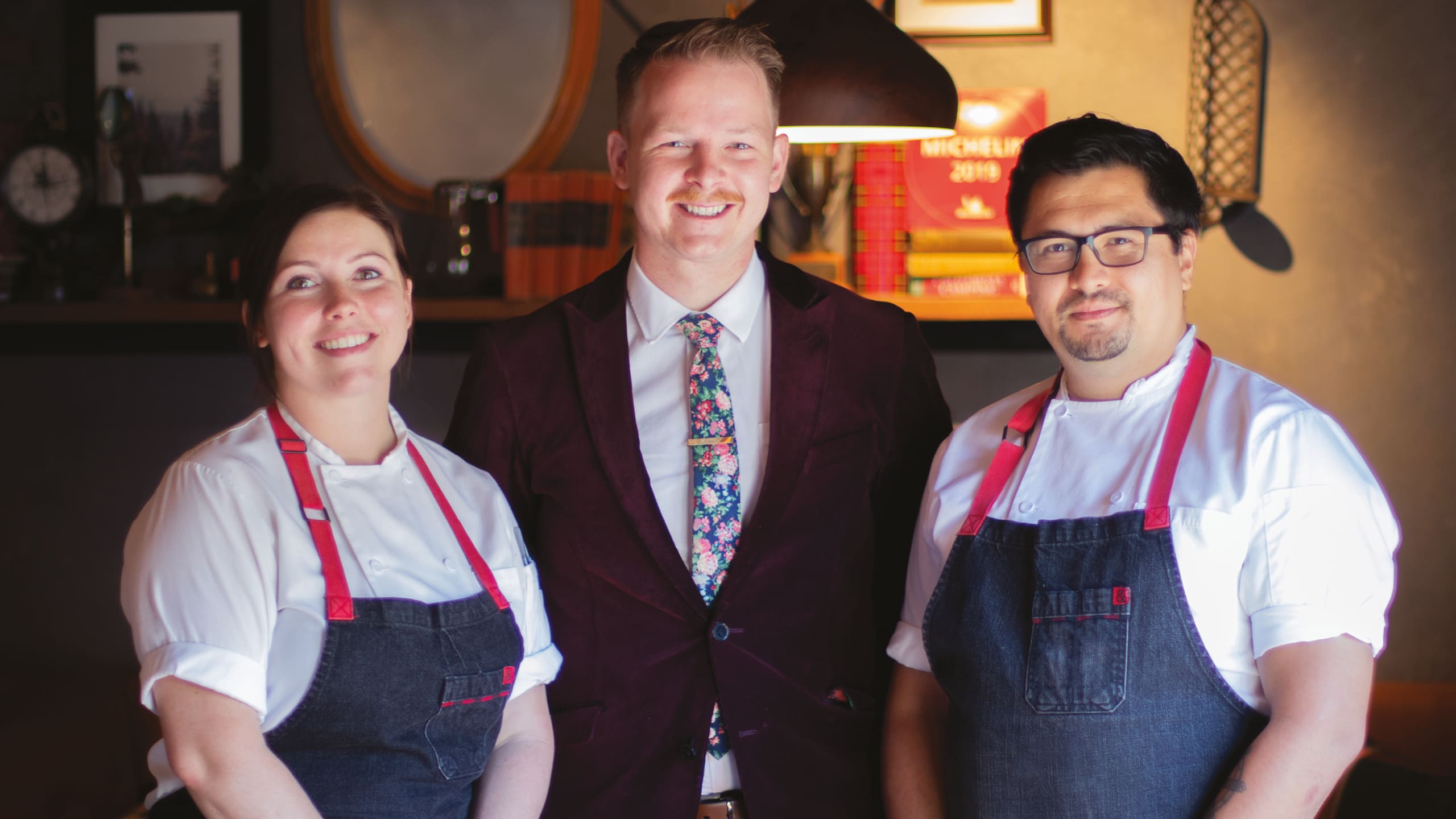
ON A MISSION
At Lazy Bear in San Francisco, beverage director Jacob Brown finds inspiration in the endless wealth of California produce and its vast grape-growing regions to tell the history of local winemaking in pairings, as he explains to Virginia Miller
“I think the most special part about our program is our depth and history of California,” begins Jacob Brown, beverage director at Lazy Bear. “We focus every day on our food component: local ingredients, foraged ingredients, the best farms. We’re literally surrounded in any direction by the top wine-growing regions, not just in the US, but possibly the world. This is a baby growing region in terms of human history. But I would venture to say that our wines have been proven to be tops again and again.”
Brown has been at two Michelin-starred Lazy Bear for three and a half years, although the restaurant, closely connected to the wine country surrounding it, is now eight years old.
Initially a constantly sold out, cult underground restaurant launched by David Barzelay in 2009 in his apartment, Lazy Bear moved into a brick-and-mortar location in San Francisco’s Mission District in 2014. A former lawyer turned chef, David has turned his elaborate dinner parties into a glittering career, collecting Michelin stars and the 2016 Best New Chef Food & Wine Magazine award along the way.
“I’m very honored I get to work with David,” says Brown. “He believes we should be serving wine when it’s ready, and not necessarily force younger wines on people.”
Scenes from the San Francisco restaurant a dish of corn cappelletti with smoked trout roe and Jacob Brown, Lazy Bear beverage director
Spoilt for choice
Recently promoted from sommelier to beverage director, Brown oversees all things drink at a restaurant known for its spirits as well as its wines. The deep collection holds over 6,000 bottles of wine and over 200 spirits, with an extensive vintage spirits and wine selection. Over the years at Lazy Bear, I’ve sipped a 1974 Ridge Fiddletown Zinfandel one visit, a 1940 Cognac another. The list contains a range of international wines, too, like Argiano’s Brunello di Montalcino from Tuscany.
“The sort of X factor about Lazy Bear is always time,” explains Brown, as he talks of the way they age their cultured butter and how food and drink interplay. “There’s nothing that can ever replicate, say, a 1969 Louis M. Martini Zinfandel. It’s an incredible wine that nobody would think would be that delicious after all this time. But it’s one of the best wines I’ve ever had… Time is incredible, but to also tell the history of California through that. We have a true Mediterranean climate down the coast. You can stick anything in the ground in Napa. It’s going to grow, and to the best of its ability.”
For example, their wine list has seven pages of Zinfandel alone, much of it produced before the year 2000. “Most people don’t have any Zinfandel with any amount of age on it,” Brown points out, “but Zin is an incredible grape because of its unique cluster sizes and how it has infinite ageability. It’s the story of California wine production as a whole.”
Land of plenty
Brown’s mentors and heroes include Kelli White, who, with Scott Brenner, launched an award-winning vintage California/Napa wine list at Press in Napa Valley, and advanced sommelier Matthew Dulle, who built the Lazy Bear wine list from its early days and trained Brown. In Lazy Bear’s cellar, Brown dove deeper into historic California wines — and how many are aging well now.
“I think [California wine] is the best it’s ever been,” he notes. “What’s happening in Santa Barbara right now: I am floored. Many of these wines have structure across the board, and I think that in 30 to 40 years, the way we’re talking about 1960s and 1970s, even 1980s, wines, I think we’re going to be talking about 2000s on. I think these wines are going to go the distance. Napa is hitting on all cylinders right now. You can see now even larger producers bringing in more restrained styles.”
California’s underrated wine regions are all over the state, many just an hour or two from San Francisco, like the Santa Cruz Mountains or Santa Lucia Highlands AVAs. Brown shares a few favorites. “Caraccioli Cellars [with a tasting room in Carmel and winery in nearby Salinas Valley] should be known as the best American sparkling right now. They’re just on a different plane. We have luckily acquired quite a bit of Ramey [Wine Cellars in Sonoma County] from the 1990s through early 2000s. How those Chardonnays are able to age, because they were built so well. It tastes like Grand Cru Burgundy.”
Perfect pairings
When it comes to food pairings on Lazy Bear’s ever-changing menu, Brown works closely with chef Barzelay and their powerhouse chef de cuisine duo, Tim Jacob and Taylor Zoller. Almost daily, they taste wines with and without food, so that even the chefs will come to Brown with ideas for wine pairings based on previous tastings.
Brown explains his thought process: “Taking traditional dishes, such as corn-based dishes, we do a traditional fresh corn grits. It’s a Lazy Bear staple with the great corn we have here in the Bay Area. Chardonnays that are perceived to be buttery, with age on them, they just meld so beautifully with corn. We particularly like working with Zuckerman Family Farms asparagus.” Brown explains that often more obvious pairings are the likes of Grüner Veltliner. “But I know that we’re going to be using trout — and some sort of roe — with our asparagus.” Unique combinations and exceptional produce make him reach further with the pairings, as does that vintage cellar.
And always, it’s a symbiotic relationship: “As much as I try and train the chefs on what things taste like in wine, they train me every day on what the best produce should taste like.”
Alternative dining options to explore: Saison and Sorrel
PHOTOGRAPHY BY ©Spinach and Lazy Bear
We recommend
RATTI’s hero
His father Renato put Barolo on the map. Now Pietro Ratti is transforming the revered wine for new generations. Nargess Banks meets the vintner at his Piedmont vineyard
WINE TRAILS OF THE LANGHE AND ROERO
Commencing our Italian road trip in the Langhe and Roero in Piedmont, where we visit the wineries and sample the cuisines that express this unique place
EXPLORE MAZE ROW’S HALO WINES
Maze Row has curated a collection of wines from unique producers, each with their own individual expression. Sommelier and Italian wine specialist John Irwin picks out the halos in the company portfolio
THE ARCHITECTURE OF WINERIES
Can architecture fundamentally alter our wine experience? Some of the world’s finest wineries believe that building design can, as Jonathan Bell takes a tour
